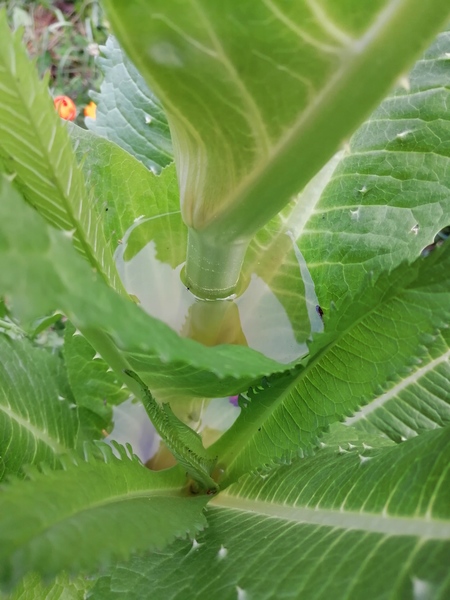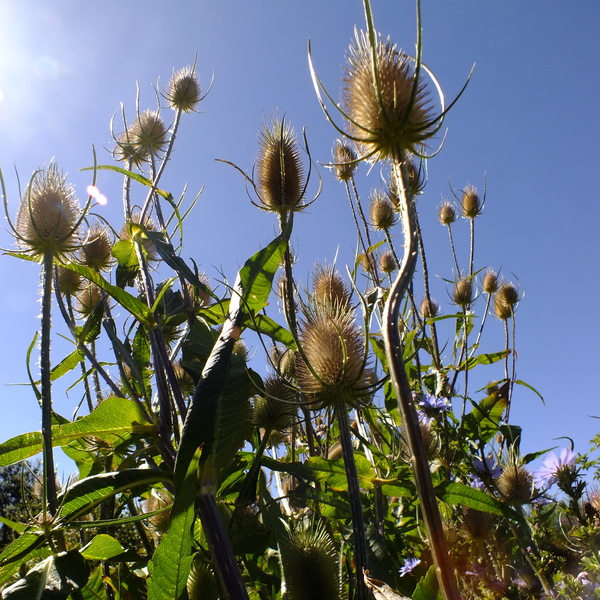Teasel - Dipsacus fullonum
Physical Characteristics
- Dipsacus fullonum is a BIENNIAL/PERENNIAL growing to 1.8 m (6ft).
- It is hardy to zone (UK) 5.
- It is in flower from January to February and the seeds ripen from February to March
- The flowers are hermaphrodite (have both male and female organs) and are pollinated by Bees, self.
- The plant is self-fertile.
- It is noted for attracting wildlife.
Soils: light (sandy), medium (loamy) and heavy (clay) soils and can grow in heavy clay soil. Suitable pH: acid, neutral and basic (alkaline) soils. It cannot grow in the shade. It prefers moist soil.
Habitats
Woodland Garden Sunny Edge; Meadow; Cultivated Beds;
Edible Uses
None known
Medicinal Uses
Cancer; Diaphoretic; Diuretic; Homeopathy; Skin; Stomachic; Warts.
Teasel is little used in modern herbalism, and its therapeutic effects are disputed[254]. Traditionally it has been used to treat conditions such as warts, fistulae (abnormal passages opening through the skin) and cancerous sores[254]. The root is diaphoretic, diuretic and stomachic[7]. An infusion is said to strengthen the stomach, create an appetite, remove obstructions of the liver and treat jaundice[4, 254]. The root is harvested in early autumn and dried for later use[7]. An infusion of the leaves has been used as a wash to treat acne[257]. The plant has a folk history of use in the treatment of cancer, an ointment made from the roots is used to treat warts, wens and whitlows[4, 218]. A homeopathic remedy is made from the flowering plant[7]. It is used in the treatment of skin diseases[7].
Other Uses
A blue dye obtained from the dried plant is an indigo substitute[74]. It is water soluble[74]. A yellow is obtained when the plant is mixed with alum[148].
Cultivation details
Succeeds in most soils[1] but prefers clay[17]. Prefers a deep rich soil[169]. Requires a sunny position[169]. A good butterfly plant[24]. This is the true wild species of teasel, its bracts are too flexible to be used for combing cloth[17]. The flowering heads are much prized by flower arrangers because they keep their colour almost indefinitely when dried[7].
Propagation
Seed - best sown in early spring in situ

